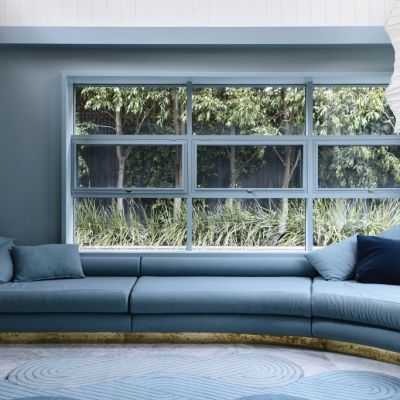Ivy Muse founders Alana Langan and Jacqui Vidal on how to cultivate wellbeing at home with plants

Alana Langan and Jacqui Vidal, the founders of botanical emporium Ivy Muse, explain biophilia in the home.
When you think of nature, how do you feel? Relaxed? Invigorated? Happy? Most people don’t need convincing to get out into nature. Without even realising it, we’re inherently drawn to the natural world. That’s biophilia.
The word “biophilia” was introduced in the 1960s by social psychologist Erich Fromm and later popularised by biologist Edward Osborne Wilson in his 1984 book, Biophilia. Wilson explored the theory that humans have an innate desire to connect with other forms of life, a deep-seated affinity with the natural world built up over human evolution.
Biophilia can be summed up as an intuitive love of life and living systems. Biophilia encourages us to slow down and pay attention to our surroundings. Maybe you can smell wisteria on the breeze through an open window or feel the warmth of the sun on your skin. Perhaps you can hear a chorus of birdsong outside or notice the calming effects of a walk in the forest. In its multitude of forms, biophilia soothes us deep within.

Biophilic design has three overarching elements: “direct” connection to nature, “indirect” connection to nature and “experience of space and place”.
“Direct” refers to direct experience. Think of the feel of the sun on your skin, smelling the fresh spring breeze through your open window, caring for your houseplants or warming yourself by a crackling fire.
“Indirect” connection can be anything that evokes a sense of the natural world, particularly natural materials, colours, forms and shapes.
Artworks or photos of nature are also considered indirect, as are textures and patterns that may be found outside. Even elements and finishes that age and show a patina – for example, raw brass and copper – can be considered biophilic, as they represent the passing of time, a natural occurrence.
“Experience of space and place” refers to spatial features that are reminiscent of those found in nature. Examples of such features include outdoor views, visual connections between interior spaces, and cosy spots that offer refuge and attachment to the environment. This element is generally incorporated into the initial design of a space, but there are still some key tactics you can try out at home, including incorporating views and materials and decor.
Views

Sometimes the simplest way to connect with nature is to look outside.
You will see layers of earthiness – a literal multitude of elements for your senses to experience. For this reason, keeping clear, unobstructed views to the outdoors is key.
This is a wallet-friendly and straightforward biophilic hack that shouldn’t be overlooked. If you have views to appreciate, pull back curtains or open blinds and shutters where possible, and let nature and natural light reign supreme. Do you have any solid doors that could be changed to glass? Or frosted glass that could be replaced with clear?
Skylights can be a great way to create sight lines to the outside, and houseplants love sitting under them too! Also, consider your window treatments.
Can you replace heavy curtains or blinds with sheer fabrics? Or even remove window coverings entirely? When you’ve been living in the same space or with the same furniture for a while, sometimes you don’t realise how it can be improved.
Take time to step back and review the layout. Are all sight lines to the windows and doors clear? Do you have a wide or tall plant that’s blocking a window? Try to find a more suitable spot where it can thrive, although not at the expense of your outlook.
Position sofas, chairs and other seating to make the most of the view, and ensure there are comfy nooks or places to which you can retreat and enjoy your surroundings.
Materials and decor

Natural materials and decor that show signs of age, changing and developing a patina over time, create a fundamental link with the outside world. Artificial products rarely evoke that sense of deep-seated satisfaction we get when we see organic forms and materials with a tale to tell.
Think about how you feel when you come across a well-weathered leather chair, complete with the markings of a life well spent, or a brass bowl that has been a home for trinkets or keys for years.
The pleasure and sense of connection we experience when we see and handle such objects is biophilia. Our senses thrive on variation and contrast. Choose a mix of materials and finishes that will engage your senses, from smooth timber grain to textured ceramics and rough seagrass to polished copper. The organic, comforting and familiar appeal of natural materials soothes both mind and body.
This is an extract from Nature Style: Cultivating Wellbeing at Home with Plants by Alana Langan and Jacqui Vidal with photography by Annette O’Brien (Thames & Hudson), out soon, $34.99.

We recommend
We thought you might like
States
Capital Cities
Capital Cities - Rentals
Popular Areas
Allhomes
More
- © 2025, CoStar Group Inc.










